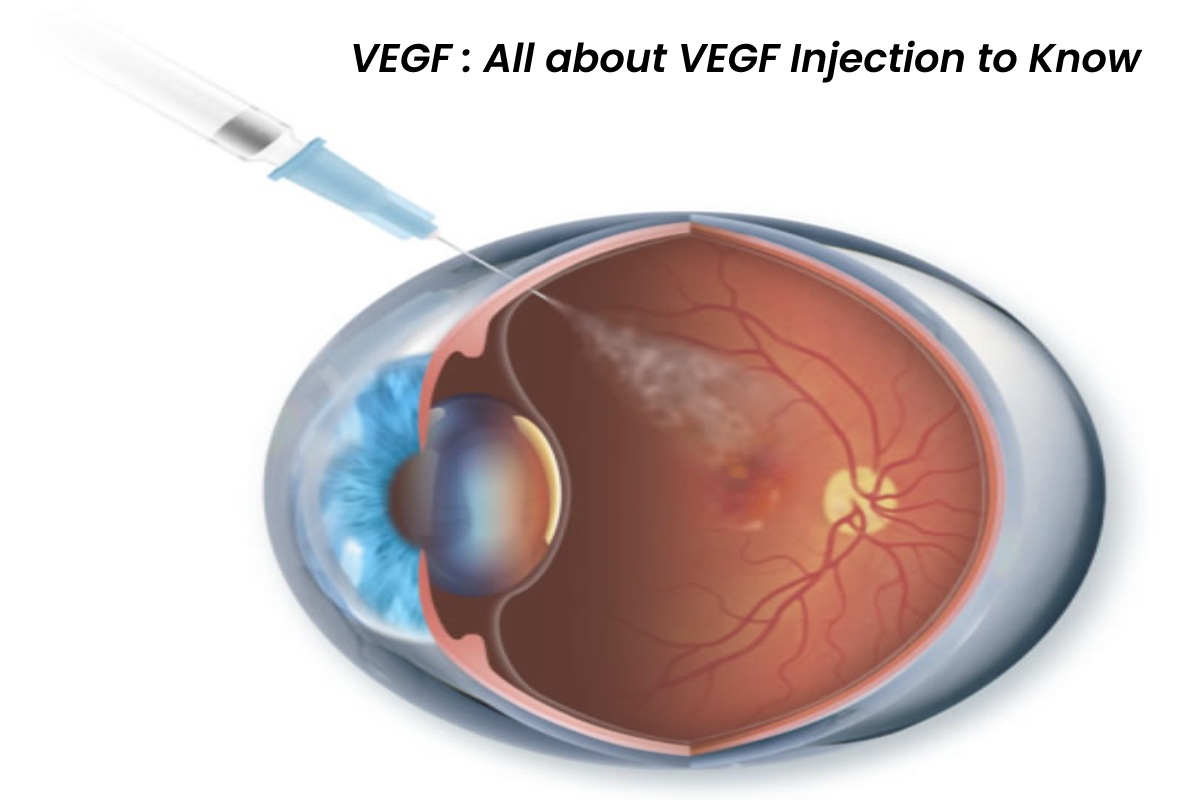VEGF – The eye is such a fragile organ, and the retina in particular is very susceptible to damage. Vascular endothelial growth factor (VEGF) injections are used to treat age-related macular degeneration (AMD), retinitis pigmentosa, and other conditions associated with poor blood flow to the retina. The latest research shows that these injections can lead to an increase in quality of life for patients who have been diagnosed with AMD.
In general, VEGF treatments have been found not only to halt disease progression but also to reverse some vision loss. One study published by the American Academy of Ophthalmology showed that people who had received anti-VEGF therapy for at least three years experienced a significant improvement in their eyesight within six.
Anti-VEGF injections are a treatment for age-related macular degeneration. The injection contains an antibody that blocks the VEGF protein which is responsible for causing blood vessels to grow in the retina. This prevents new abnormal blood vessels from growing and helps prevent vision loss due to wet AMD, dry AMD, or diabetic retinopathy. It has been shown that Anti-VEGF injections may also be helpful against other eye diseases such as choroidal neovascularization (CNV) with associated inflammation of the middle layer of the retina called subretinal membrane or subretinal space that occurs in some people with inherited forms of RP, Stargardt disease, Best disease, and cone dystrophy.
VEGF is one of the most important factors for maintaining healthy eyes. By blocking it, we can prevent age-related vision loss and increase your chances of retaining sharpness as you grow older!
Table of Contents
What is the Success Rate of Anti-VEGF Injections?
Anti-VEGF medications are quite effective at preventing vision loss associated with wet AMD. Up to 90% of persons experience vision stability as a result of these injections. If wet AMD is detected early enough, up to 30% of people may restore some of their lost vision.
How Anti-VEGF is Administered?
To avoid infection, an ophthalmologist will clean your eye. To alleviate discomfort, the eye is numbed. A tiny gadget may be inserted into your eye to keep your eyelids clear. Your ophthalmologist injects the medication using a very fine needle into the white portion of your eye. The injection procedure is quick and painless. Typically, the needle is not visible.
How do the VEGF Injections Work?
VEGF passes through your bloodstream. It binds to receptor sites in the endothelium, the lining of blood vessels. The goal of [VEGF] is to increase the permeability (leakiness) of existing blood arteries while also assisting in the formation of new ones. In instances like wound healing, the formation of new blood vessels is critical.
Wet AMD is instigated by excessive blood vessel development and permeability in the eyes. When [anti-VEGF] medicine is injected into your eyes, it binds to endothelial receptor sites, preventing [VEGF] from interacting with them. This prevents or inhibits the leakage of blood vessels and the formation of additional vessels that occurs in wet AMD.
What are the Adverse Effects following Anti-VEGF Injections?
Endophthalmitis
One of the most hazardous side effects of intravitreal injections is infectious endophthalmitis. The incidence of endophthalmitis per patient has been observed in multicenter clinical trials with [anti-VEGF] therapy. The most critical component in minimizing the incidence of endophthalmitis following intravitreal injection is careful attention to pre-, intra-, and post-injection concerns. As a result of recent outbreaks of post-intravitreal bevacizumab injection endophthalmitis, special emphasis has been placed on the aseptic preparation of bevacizumab syringes.
Intraocular inflammation
Intraocular inflammation is a common side effect of intraocular anti-VEGF pharmacologic medications. Distinguishing sterile intraocular inflammation from infectious endophthalmitis can be challenging. The time of presentation, the existence of pain and the severity of clinical findings were all considered in one investigation.
VEGF ELISA Kit
In exudative age-related macular degeneration, commercially available enzyme-linked immunosorbent test (ELISA) kits are frequently used to evaluate vascular endothelial growth factor VEGF levels. This study validated the VEGF ELISA kits‘ accuracy by doing measurements in the presence of [anti-VEGF] medications.
The Human VEGF ELISA Kit is a cost-effective solution for the detection of human VEGF in serum, plasma, or cell culture supernatants. This kit has been designed to detect both free (unbound) and total (bound + unbound) VEGF concentrations in samples with high sensitivity. It also provides accurate quantification of the amount of human VEGF present in your sample.
If you’re looking for a highly sensitive assay that will provide accurate results at low costs then this kit is perfect for you! With our easy protocol, we make it simple to get started on detecting human VEGF today! You won’t find alternative product like this one on the market today so don’t wait any longer – order yours now!
Click here right now to purchase your very own Human VEGF ELISA Kit today!
Anti-VEG] injections can be very beneficial for patients with wet macular degeneration. The adverse effects of the injection will vary because every person’s body is different and reacts differently to medication. For more information on [VEGF ELISA] kits, contact our office today. We wish to answer any queries.

